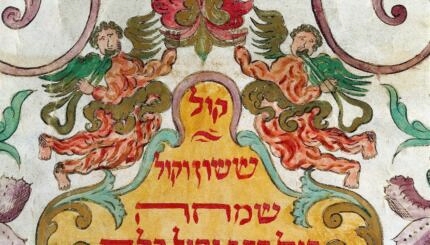The ancient world was long ago, but it was not ancient. Rather, it was when the world was very young. We are the old ones hurtling toward the encroaching end, not the bright beginning of human history. In his foreword to Athens and Jerusalem, philosopher Lev Shestov writes: “a foreword is basically always a post-word.” We write a foreword after finishing; the old world is young, and time is flooded with paradox.
The Newtonian world was a straight arrow world, with the past remaining firmly in the past, and the future unfolding like the credits at the opening of a movie — exciting, unknown and uni-directional. Now we are told that time has creases and folds, it is indeterminate and all at once, and it is different in different dimensions.
The sages tell us that in Torah there is no chronology. Each story bears on every other story; all is simultaneous. Abraham stands at Sinai and Moses visits Rabbi Akiva. The world of the Torah, like the world as science teaches us to understand it, is far more fantastic and paradoxical than we first imagined.
Rabbi David Wolpe’s musings are shared in My Jewish Learning’s Shabbat newsletter, Recharge, a weekly collection of readings to refresh your soul. Sign up to receive the newsletter.
With your help, My Jewish Learning can provide endless opportunities for learning, connection and discovery.



